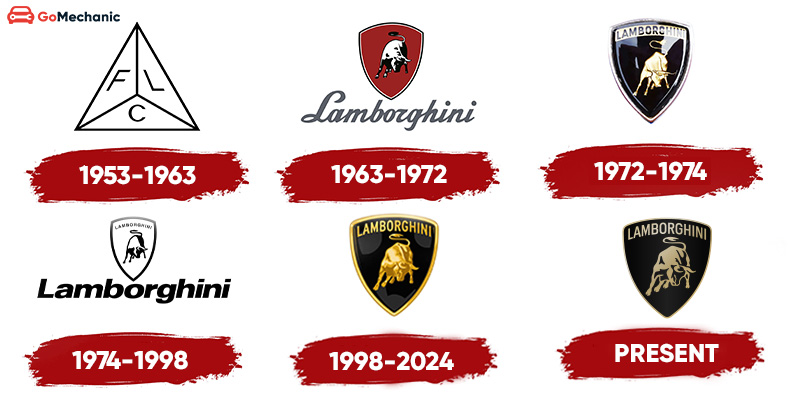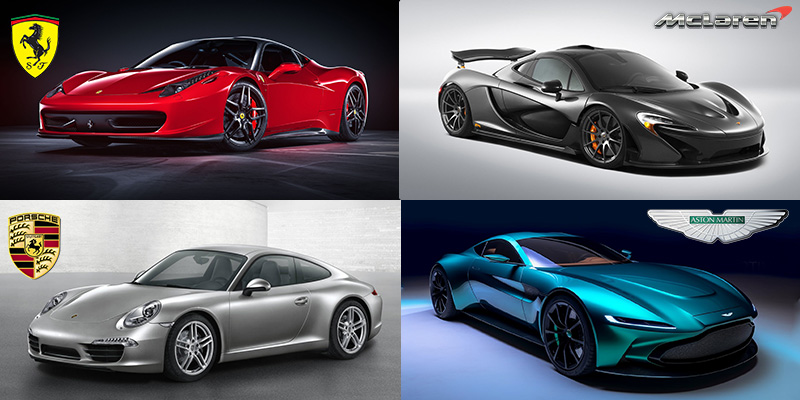Importance of a company’s corporate look
The appearance of a company, known as its corporate look, is vital for its success. It distinguishes you from competitors and leaves a lasting impression on customers, conveying your values and mission. A strong corporate look fosters trust, loyalty, and recognition, impacting consumer choices. In today’s fast-paced business environment, a well-crafted corporate look is crucial for establishing a prominent brand presence and staying ahead of the competition.
Overview of Lamborghini’s current corporate image
Lamborghini’s corporate image today is a reflection of the brand’s commitment to excellence and innovation. With a strong emphasis on performance, design, and luxury, Lamborghini has created a reputation that is synonymous with power, wealth, and success. From the iconic Lamborghini Aventador to the sleek and futuristic Huracán, each vehicle in the Lamborghini lineup is a work of art that showcases the brand’s dedication to pushing the limits of automotive design and engineering.
History of Lamborghini as a Luxury Car Manufacturer
Inception (1960s):
- Founded by Ferruccio Lamborghini in 1963.
- Focus on high-performance grand touring cars.
- Unveiled Lamborghini 350 GT in 1964.
Iconic Innovations (1960s-1970s):
- Introduced the groundbreaking Miura in 1966.
- Continued innovation with models like the Countach.
Financial Challenges (1980s):
- Faced financial difficulties.
- Experienced ownership changes, including Chrysler Corporation’s brief ownership.
Stability Under Audi (1998-present):
- Acquired by Audi AG in 1998.
- Launched successful models like Murciélago and Gallardo in the 2000s.
Pushing Boundaries (2010s):
- Innovated with Aventador and Huracán models.
- Pushed performance and design boundaries.
- Showcased cutting-edge technology and engineering.
- Solidified Lamborghini’s position as a leader in the supercar segment.
Embracing Hybrid Technology (2020s):
- Introduced the first hybrid production model, the Sián.
- Plans to electrify the entire lineup by decade’s end, prioritising sustainability without sacrificing performance.
Overview of Lamborghini’s current branding and design elements
Logo:
- Features iconic golden bull, symbolising strength and determination.
- Represents founder Ferruccio Lamborghini’s zodiac sign, Taurus.
Hexagonal Design Elements:
- Prevalent in exhaust pipes and interior patterns.
- Conveys sharpness, precision, and cutting-edge technology.
Wedge-Shaped Body:
- Distinctive design with low, aggressive stance.
- Signature feature since the iconic Countach model.
Scissor Doors:
- Unique upward-opening doors.
- Enhance exotic appeal and practicality in tight spaces.
Carbon Fibre Construction:
- Extensively used for reduced weight and increased performance.
- Exposed carbon fibre elements contribute to a premium aesthetic.
Bright and Bold Colours:
- Offers vibrant hues like bright yellow and orange.
- Reflects confident and attention-grabbing personality.
Italian Craftsmanship:
- Maintains traditional Italian craftsmanship in construction.
- Utilises high-quality materials like leather and Alcantara suede.
Analysis of current corporate look

Assessment of strengths and weaknesses:
Evaluating strengths and weaknesses is a pivotal step towards self-awareness and improvement, enabling individuals to align their capabilities with personal and professional goals.
Strengths:
- Iconic Brand Identity: Synonymous with luxury, performance, and exclusivity.
- Unique Design Language: Distinctive wedge-shaped body designs and scissor doors set it apart.
- Focus on Performance and Innovation: Unwavering commitment to pushing performance boundaries.
- Exclusivity and Prestige:Low production volumes and high price points contribute to exclusivity.
Weaknesses:
- Limited Product Range: Relatively narrow focus on high-end sports cars.
- High Price Point: Priced at a premium, limiting customer base.
- Dependence on Parent Company: Vulnerable to decisions of Audi AG (Volkswagen Group).
- Brand Perception Challenges: Some perceive as too flashy or ostentatious.
Comparison to competitors

Ferrari:
- Extensive product range including grand tourers and hybrids.
- Deeply rooted in motorsports heritage and racing pedigree.
McLaren:
- Known for innovative use of lightweight materials and advanced aerodynamics.
- Gained recognition for cutting-edge technology and performance.
Porsche:
- Offers practical and daily-drivable alternatives.
- Strong emphasis on exceptional engineering and performance.
Aston Martin:
- Focuses on luxury sports cars with elegant and understated aesthetic.
- Appeals to a slightly different customer segment compared to Lamborghini.
Objectives of New Corporate Look
Identified Goals for Rebranding:
The rebranding strategy aims to refresh and evolve the brand identity, broaden its appeal across diverse audiences, and underscore its commitment to innovation and sustainability, all while maintaining its heritage and luxury positioning.
Modernise Brand Identity:
- Update visual identity while preserving core essence.
- Appeal to younger demographic without compromising heritage.
Expand Target Audience:
- Attract a diverse customer base beyond ultra-wealthy enthusiasts.
- Appeal to younger, aspirational buyers and environmentally conscious customers.
Emphasise Technological Innovation:
- Highlight commitment to hybrid and electric vehicles.
- Showcase cutting-edge technology and sustainability efforts.
Strengthen Brand Perception:
- Address negative perceptions without losing edge.
- Project sophisticated image while maintaining boldness.
Target Audience:
- Existing Enthusiasts: Retain a core base of ultra-wealthy enthusiasts.
- Aspirational Buyers: Attract the younger demographic interested in high-performance vehicles.
- Environmentally Conscious Customers: Target customers prioritising sustainability and performance.
- Lifestyle-Oriented Customers: Appeal to those valuing luxury, exclusivity, and prestige.
Key Messaging:
- Performance and Innovation: Emphasise cutting-edge technology and performance.
- Exclusivity and Craftsmanship: Showcase Italian craftsmanship and attention to detail.
- Design and Style: Celebrate bold and attention-grabbing aesthetics.
- Lifestyle and Aspiration: Portray ownership as a symbol of success and luxury.
- Sustainability and Innovation: Highlight commitment to environmental responsibility.
Lamborghini’s Updated Look: Proposed Changes
New Logo Design:
The new logo design seamlessly integrates tradition with modernity, symbolizing a fresh era of innovation, luxury, and sustainability for the brand.
Streamlined Bull:
- Simplified and streamlined silhouette for modernity.
- Minimalist and geometric interpretation while retaining recognition.
Dynamic Positioning:
- Bull depicted in dynamic, forward-leaning posture.
- Conveys motion, power, and forward momentum.
Monochromatic Versatility:
- Designed to work effectively in a single colour.
- Offers versatility across various backgrounds and applications.
Typographic Update:
- Wordmark receives a subtle update with a modern and bold typeface.
- Complements streamlined bull icon.
Updated Color Palette:
The updated colour palette merges classic and modern with sophisticated hues and metallic accents, embodying luxury, innovation, and contemporary trends.
Primary Colours:
- Retains iconic yellow and green in updated shades.
- Reflects contemporary design trends.
Secondary Colours:
- Introduces rich, deep tones like burgundy and navy blue.
- Conveys sophistication and luxury.
Metallic Accents:
- Incorporates brushed aluminium or rose gold for premium touch.
- Aligns with focus on performance and technology.
Neutral Tones:
- Includes warm greys and beiges for versatile backdrop.
- Complements bold colours and metallic accents.
New Brand Identity Guidelines:
The New Brand Identity Guidelines are designed to steer our brand into a future marked by sophistication, innovation, and inclusivity, setting a cohesive direction for our visual and communicative elements across all platforms.
Logo Usage:
- Specifies correct usage, minimum sizes, and clear space requirements.
- Defines permitted variations (e.g., full-colour, monochromatic).
Colour Application:
- Defines primary, secondary, and accent colours with respective codes.
- Specifies appropriate usage scenarios for each colour.
Typography:
- Introduces a custom or selected typography system.
- Guidelines for font usage, hierarchy, and pairings.
Imagery and Photography:
- Direction on preferred photography styles and image treatments.
- Use of brand-specific graphic elements or patterns.
Brand Voice and Tone:
- Outlines brand’s voice, tone, and messaging guidelines.
- Ensures consistency in copywriting and language usage.
Lamborghini’s New Look: Implementation Plan
Implementing Lamborghini’s rebranding involves careful planning, resource allocation, and dynamic marketing to introduce a refreshed brand identity while preserving its prestigious heritage.
Timeline for Roll-Out:
- Planning and Development (6-9 months): Research, develop new brand elements, and prepare implementation strategies.
- Internal Roll-Out (3-6 months): Educate and align internal stakeholders with the new brand identity.
- External Launch (3-6 months): Publicly unveil the new identity through global marketing efforts and updated customer touchpoints.
- Ongoing Implementation and Monitoring (12+ months): Ensure brand consistency and evaluate the rebranding’s impact.
Budget and Resource Allocation:
- Allocate budget for creative agency fees, marketing campaigns, production updates, and internal resources.
- Assign dedicated project management, creative and design teams, marketing and communications personnel, and operational support.
Marketing and Communication Strategy:
- Launch a global campaign to showcase the new identity.
- Utilise media relations and social media to build anticipation and engagement.
- Implement experiential marketing to offer immersive brand experiences.
- Engage customers and employees to foster brand loyalty and ambassadorship.
Assessment of Lamborghini’s Corporate Image
For Lamborghini’s rebranding initiative, measuring success, gathering feedback, and making necessary adjustments are essential components to ensure the rebrand resonates well with the target audience and achieves its strategic goals.
Metrics for Measuring Success:
- Brand Awareness and Recognition: Monitor brand awareness through surveys, website traffic, social media engagement, and media mentions.
- Brand Perception and Sentiment: Use sentiment analysis and customer feedback to assess perception changes towards desired brand attributes.
- Sales and Financial Performance: Evaluate sales figures, revenue growth, customer acquisition, and retention rates.
- Brand Equity and Loyalty: Measure changes in brand equity and loyalty via surveys, net promoter scores, and repeat purchase rates.
- Marketing Effectiveness: Analyse marketing campaign performance, engagement rates, and ROI.
Feedback Mechanisms:
- Customer Surveys and Social Media Monitoring: Collect feedback through surveys, social media engagement, and online conversations.
- Focus Groups and Interviews: Conduct qualitative research with customers and brand enthusiasts for deeper insights.
- Employee Feedback: Involve employees in the feedback process to gauge internal perceptions and suggestions.
- Industry Feedback: Seek opinions from industry experts and participate in forums for broader insights.
Adjustments and Revisions:
- Brand Identity Elements: Refine brand identity elements based on feedback to ensure alignment with market response.
- Messaging and Communication: Revise brand messaging and communication strategies to better connect with target audiences.
- Product Offerings: Update product and service offerings to align with the new brand identity and customer expectations.
- Internal Processes: Enhance training and internal processes for consistent brand representation.
- Partnerships: Reevaluate partnerships and collaborations for improved brand reach and presence.
Conclusion
Lamborghini’s rebranding merges modernity with heritage to broaden its appeal and solidify its iconic status. It introduces a refined logo, an expanded colour palette, and comprehensive guidelines for a consistent brand presentation. This evolution aims to modernise Lamborghini’s image, emphasise innovation and sustainability, and attract a wider audience, strengthening its perception as a sophisticated yet bold luxury brand. Success hinges on the collective support of stakeholders, including employees, partners, and enthusiasts, to champion and embody this new corporate identity, ensuring Lamborghini’s continued leadership in luxury automotive excellence.





